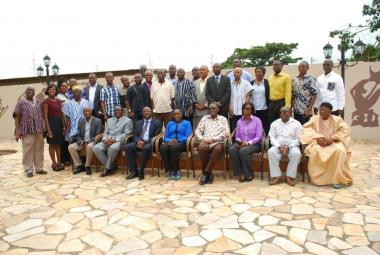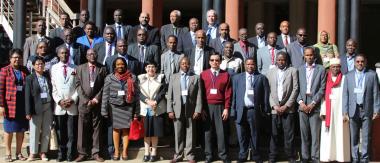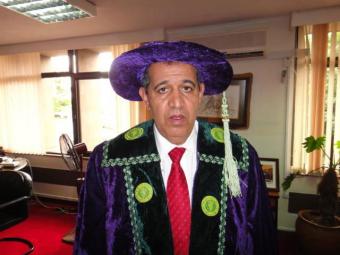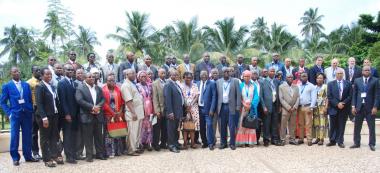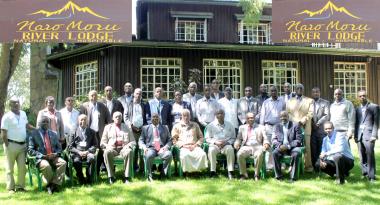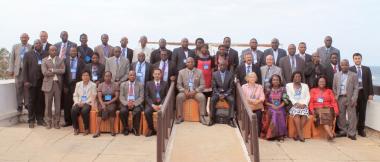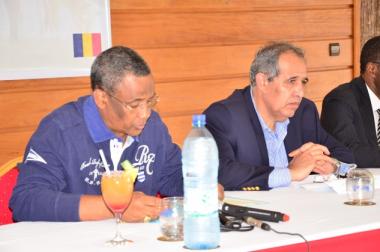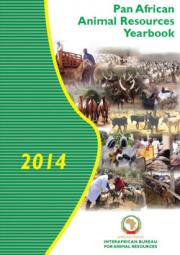
African Trypanosomiasis, commonly referred to as "sleeping sickness" or Nagana, is a disease transmitted by the tsetse fly and is exclusively found in sub-Saharan Africa. This disease is responsible for an estimated annual death toll of over 50,000 individuals, with over 65 million people in sub-Saharan Africa currently at risk of contracting it.
The battle against trypanosomiasis, a significant obstacle to socio-economic development in Africa, has been ongoing for decades. This disease detrimentally affects both human and livestock health, limits land use, and perpetuates poverty, posing a substantial barrier to the continent's growth and development.This relentless fight against the disease is driven by the International Scientific Council for Trypanosomiasis Research and Control (ISCTRC), a vital arm of the African Union Commission.
Kenya will host the 36th General Conference of the ISCTRC in Mombasa from the 18th - 22nd September 2023 to review and recommend control approaches for the disease. This event will host about 300 participants drawn from 38 tsetse infested AU- Member States and will bring together stakeholders from disease control workers, scientists from African Union (A.U) Members States, researchers from universities in Africa and beyond. Representatives from international organizations and institutions as well as Ministries responsible for animal health, human health, and the environment in the 38 affected Member States will attend the meeting.
International organizations expected in the meeting include: Food and Agricultural Organization (FAO), the World Health Organization (WHO), the International Atomic Energy Agency (IAEA) and the International Livestock Institute (ILRI). ICIPE, FIND, DNDi, GALVmed and Regional Economic Communities as well as the private sector players will attend the meeting.
Trypanosomiasis Threats
At the beginning of the 21st century, African Heads of State and Governments acknowledged the significant danger posed by tsetse flies and trypanosomiasis (T&T). During their meeting in Lome in 2000, they highlighted the severity of the T&T issue as a major hindrance to Africa's socio-economic progress. This problem profoundly impacts both human and livestock health, restricts land use, contributes to poverty, and sustains underdevelopment across the continent.
Trypanosomiasis occurs over 10 million sq km in 38 countries. 2,804 human cases were reported in 2015. About 50 million cattle are at risk with 35 million trypanocide doses used and 3 million deaths of cattle reported annually. Agricultural production loss due to trypanosomiasis is estimated at US$ 5 billion per year.
Knowledge Sharing and Collaboration is key in the eradication of Nagana
The ISCTRC Conference aims to facilitate the exchange of information on tsetse, human, and animal trypanosomiasis. It further seeks to review existing control strategies and suggest appropriate research and control approaches. The conference promises to be an enriching and collaborative event, fostering an exchange of knowledge, expertise, and strategies to combat trypanosomiasis and its impacts on Africa's development.
To ensure that the diseases is eradicated, Kenya as the host country continues to create awareness through information sharing. Scientists continue to review control strategies while recommending appropriate approaches in research and control.
The conference anticipates several positive outcomes and outputs, including:
- Dissemination of critical information related to tsetse and trypanosomiasis.
- Strengthened networking among researchers and control workers.
- Recommendations for research and control activities for the next two years.
- Enhanced capacity for tsetse and trypanosomiasis research and control.
- Elevated visibility and recognition of the Republic of Kenya's role in combating tsetse and trypanosomiasis
The meeting held every two years continues to provide enriching information on improving control of tsetse and trypanosomiasis. This has enhanced livelihoods especially of the rural communities where the problem has the most impact. Recommendations from the conference will provide new information necessary for smarter methods of tsetse and trypanosomiasis control.
The meeting is being organized under the auspices of the ISCTRC in partnership with the Ministry of Agriculture and Livestock Development of Kenya.
ISCTRC Secretariat
Established in the early 1960s, ISCTRC's primary mission is to foster international cooperation to combat trypanosomiasis. The ISCTRC operates as a hub for information exchange and collaboration, hosted by the African Union Interafrican Bureau for Animal Resources (AU-IBAR) in Nairobi, Kenya.
The Council's membership includes African Union Member States, the African Union Pan African Tsetse and Trypanosomiasis Eradication Campaign (AU-PATTEC), and international organizations such as the Food and Agricultural Organization (FAO), World Health Organization (WHO), and the International Atomic Energy Agency (IAEA).
The ISCTRC has been instrumental in disseminating knowledge and promoting research and control strategies for tsetse and trypanosomiasis through its General Scientific Conferences since 1949. These conferences are a platform for sharing insights, reviewing control strategies, and recommending effective approaches to research and control.
At the end the conference, recommendations will be adopted by the Council to guide research and control of tsetse and trypanosomiasis for the next two years. The outcomes of this conference will contribute significantly to improving the livelihoods of communities across the continent, particularly in regions heavily affected by tsetse and trypanosomiasis.

